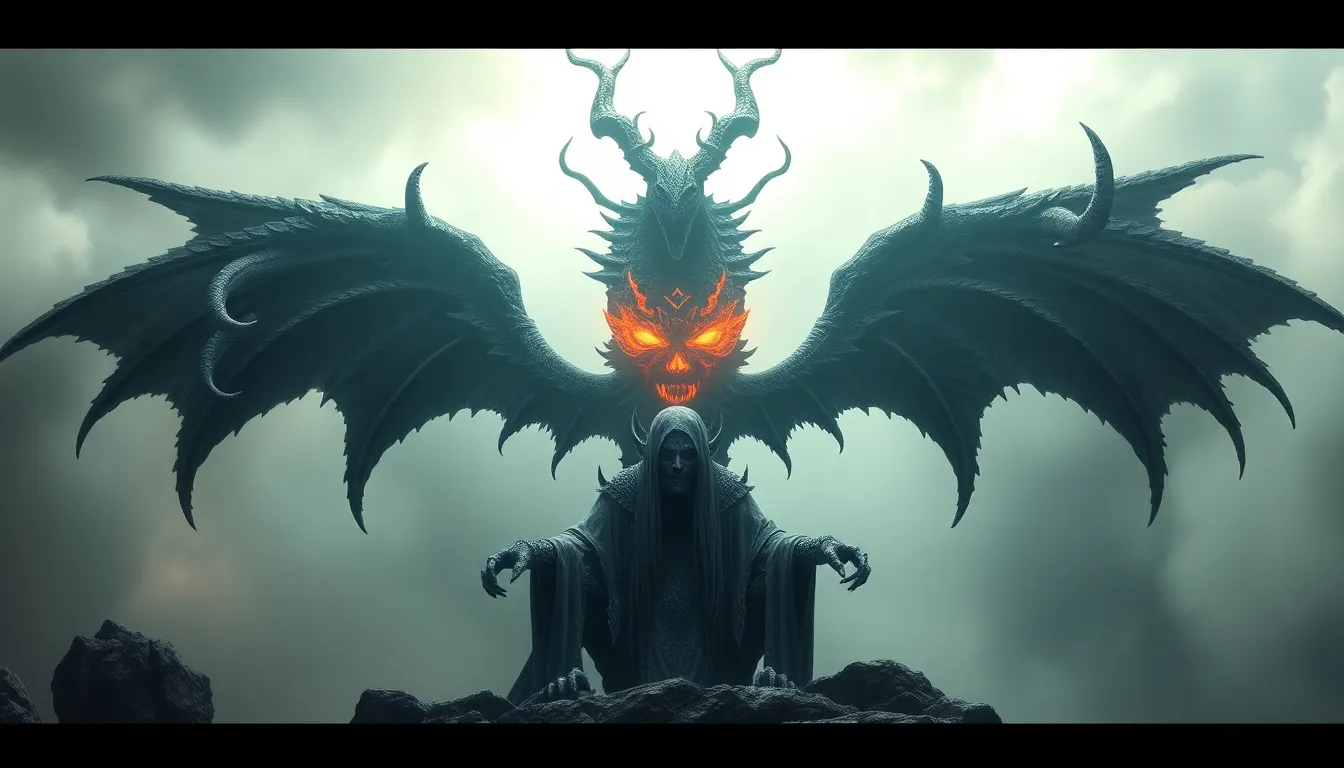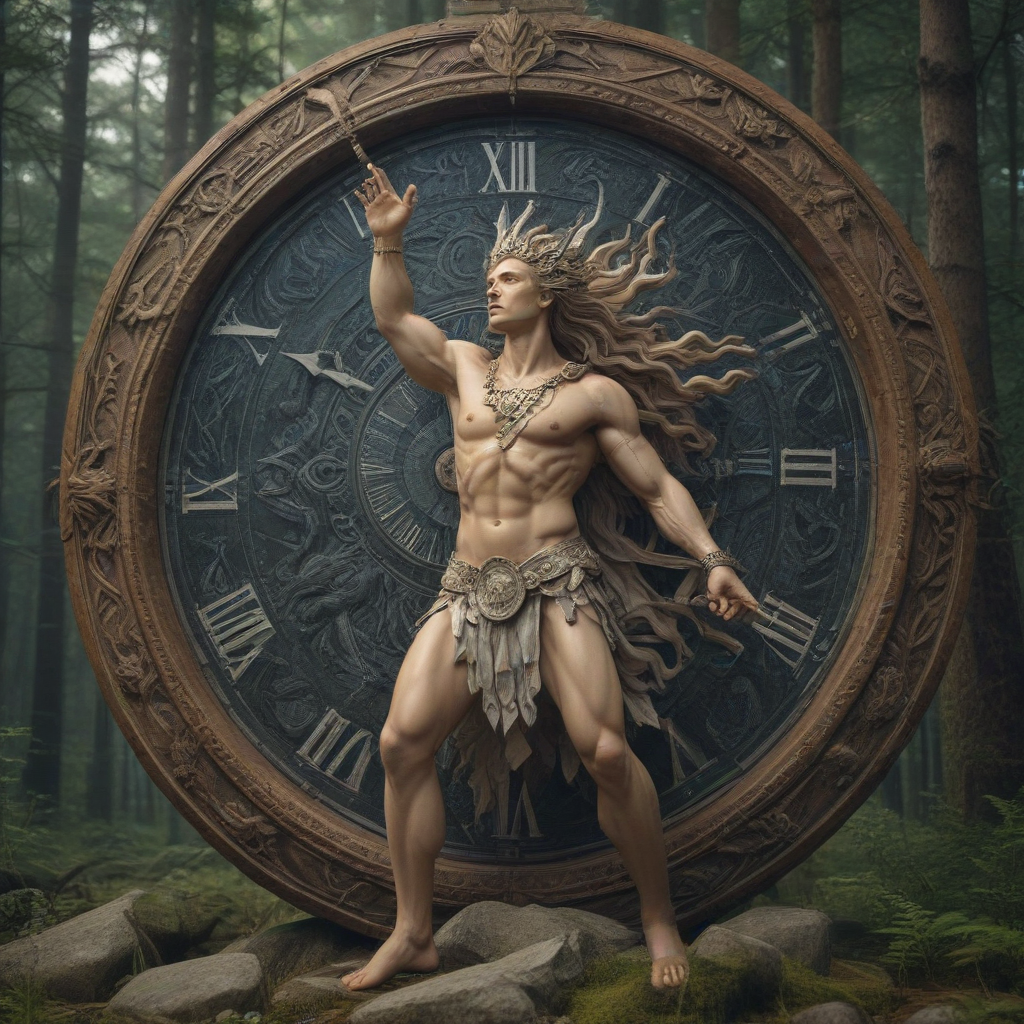The Cosmic Order: A Foundation of Indonesian Mythology
Indonesian mythology is rich with tales of gods, spirits, and heroes that reveal a profound understanding of the universe and its intricate workings. At the heart of this mythology lies the concept of cosmic order, a belief that everything in the universe is interconnected and governed by divine forces. This cosmic order, known as Rta in Sanskrit, is a guiding principle that shapes the beliefs, rituals, and daily life of Indonesians. It represents a harmonious balance between the divine, the human, and the natural world, ensuring a steady flow of life and prosperity.
The Triloka: Three Realms of Existence
Indonesian mythology depicts the universe as a three-tiered structure called the Triloka, a concept shared by many other cultures in Southeast Asia. The Triloka consists of three realms: the divine realm, the human realm, and the netherworld. Each realm plays a crucial role in maintaining the cosmic order, and their interconnectivity is essential for the well-being of all beings.
The Divine Realm: Where Gods and Spirits Dwell
The Triloka's uppermost realm is the swarga loka, the divine realm, where the gods and spirits reside. Here, the supreme god, often referred to as Sang Hyang Widhi Wasa or Batara Guru in Bali, governs the universe and oversees the other realms. Numerous lesser gods and spirits, each with their unique roles and responsibilities, inhabit this realm. They are believed to influence human life through natural phenomena, such as weather patterns, agricultural cycles, and even personal fortunes.
The Human Realm: The Mortal Plain of Existence
The Triloka's middle realm is the madya loka or the human realm, where mortal beings live their lives. This realm is a place of both joy and suffering, where humans are tasked with fulfilling their dharma, their moral duties, and contributing to the balance of the cosmos. Humans are believed to be interconnected with both the divine and the natural world. They are obligated to respect the laws of nature and honour the gods through rituals and offerings.
The Netherworld: Realm of the Ancestors and Spirits
The Triloka's lowest realm is the bhur loka or the netherworld, known as neraka in some traditions. This realm is the abode of the ancestors and spirits, where they reside after their earthly lives. It is also a place where souls are judged and purified before they are reborn in the human realm. The netherworld plays a significant role in maintaining the cosmic order, as the spirits of ancestors are believed to have a strong influence on the lives of their descendants.
The Cosmic Tree: Connecting the Realms
The cosmic tree, a prominent symbol in Indonesian mythology, represents the interconnectedness of the three realms. This tree, often depicted as a banyan or fig tree, has its roots in the netherworld, its trunk in the human realm, and its branches reaching up to the divine realm. The cosmic tree serves as a bridge between the different realms, allowing for communication and interaction between gods, humans, and spirits.
This connection is essential for maintaining cosmic order. For instance, the gods can send blessings and guidance through the tree's branches to humans in the mortal realm. Similarly, humans can offer prayers and sacrifices to the gods through the tree, ensuring their favour and protection. The tree also serves as a conduit for the spirits of ancestors to influence the lives of their descendants in the human realm.
The Balance of Nature: Maintaining Harmony in the Triloka
The concept of cosmic order emphasizes the importance of maintaining harmony between the divine, the human, and the natural world. This balance is reflected in the belief that humans have a responsibility to respect and protect the environment.
Indonesian mythology is filled with stories about nature spirits, such as forest spirits, mountain spirits, and water spirits. These spirits are believed to be guardians of their respective domains, and humans are obligated to treat them with respect. Failure to do so could lead to natural disasters, disease, or other misfortunes.
The belief in the interconnectedness of all things encourages humans to live in harmony with nature, recognizing their role as stewards of the earth. This belief has led to the development of sustainable practices, such as traditional farming methods and respect for biodiversity, which are still practised in many parts of Indonesia today.
The Impact of Cosmic Order on Daily Life
The concept of cosmic order profoundly impacts the lives of Indonesians, shaping their beliefs, rituals, and daily practices. This influence is evident in various aspects of Indonesian culture, including:
-
Religion and Spirituality: The belief in cosmic order forms the foundation of many Indonesian religions, including Hinduism, Buddhism, and traditional animistic beliefs. It guides their rituals, prayers, and offerings, which are designed to maintain harmony with the divine and nature.
-
Arts and Literature: Indonesian art and literature often reflect the concept of cosmic order. Traditional dances, music, and stories often depict the interaction between gods and humans, the importance of maintaining balance, and the consequences of disrupting the cosmic order.
-
Social Norms and Values: The concept of cosmic order also influences social norms and values. It emphasizes respect for elders, community harmony, and the importance of fulfilling one's moral duties.
The cosmic order is not just an abstract concept but a living reality that shapes the daily experiences of Indonesians.
Theories on the Origins of Cosmic Order
The origins of the concept of cosmic order in Indonesian mythology are not definitively known. However, several theories have been proposed, including:
-
Influence of Hinduism and Buddhism: The concept of cosmic order, known as Rta in Sanskrit, is a core principle in Hinduism and Buddhism. These religions played a significant role in the development of Indonesian culture and belief systems.
-
Indigenous Beliefs: Before the arrival of Hinduism and Buddhism, indigenous Indonesian cultures already had sophisticated beliefs about the universe and their place within it. These beliefs likely influenced the development of the concept of cosmic order.
-
Environmental Factors: The Indonesian archipelago's diverse geography and natural wonders may have also influenced the development of belief systems focused on harmony and balance.
The combination of these factors likely contributed to the emergence of the concept of cosmic order in Indonesian mythology.
The Importance of Rituals and Traditions
Rituals and traditions are crucial in maintaining cosmic order in Indonesian culture. They serve as a way to connect with the divine, honour the ancestors, and ensure the balance of nature. Some important rituals and traditions include:
-
Offerings and Sacrifices: These acts of worship are seen as ways to appease the gods, seek their blessings, and maintain harmony with the divine.
-
Ancestor Veneration: Indonesians honour their ancestors through ceremonies and rituals, recognizing their influence on the lives of their descendants.
-
Traditional Festivals: These celebrations honour specific gods, spirits, or natural phenomena, promoting a sense of community and connection with the cosmos.
The consistent practice of these rituals and traditions helps preserve the belief in cosmic order and ensures the continuation of a harmonious and prosperous existence.
FAQ
What is the cosmic order in Indonesian mythology?
The cosmic order, known as Rta in Sanskrit, is a belief that everything in the universe is interconnected and governed by divine forces. It represents a harmonious balance between the divine, the human, and the natural world, ensuring a steady flow of life and prosperity.
What are the three realms of existence in the Triloka?
The Triloka consists of three realms: the divine realm (swarga loka), the human realm (madya loka), and the netherworld (bhur loka).
What is the role of the cosmic tree in Indonesian mythology?
The cosmic tree, often depicted as a banyan or fig tree, connects the three realms, allowing for communication and interaction between gods, humans, and spirits. It symbolizes the interconnectedness of all things.
What is the significance of rituals and traditions in maintaining cosmic order?
Rituals and traditions, such as offerings, ancestor veneration, and traditional festivals, are crucial in maintaining cosmic order. They serve as a way to connect with the divine, honour the ancestors, and ensure the balance of nature.
How does the concept of cosmic order impact daily life in Indonesia?
The concept of cosmic order profoundly impacts the lives of Indonesians, shaping their beliefs, rituals, daily practices, and even their social norms and values. It encourages respect for the natural world, community harmony, and the fulfillment of one's moral duties.




